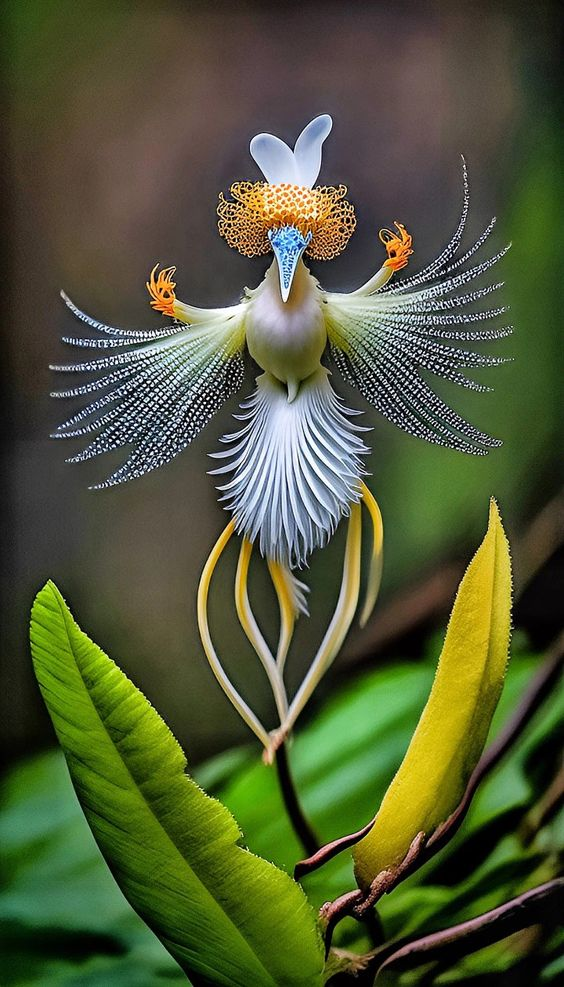In the compendium of botanical wonders, an enthralling occurrence unfolds, showcasing the existence of avian-esque florals. These botanical enigmas, mirroring their zoological kin, fuse petaline finesse with avian allure. Beholding them evokes wonderment, urging onlookers to revel in the elaborate craftsmanship bestowed by the natural realm.

Every avian-esque floral embodies nature’s flair for innovation. Petals, meticulously interlaced, form wings that embody the quintessence of ascension. The chromatic splendor of these petals, mimicking avian plumage, spans from cerulean tints of kingfishers to the vibrant spheres of hummingbirds. At the flower’s heart lies a covert marvel: a complex assemblage of stamens and pistils, mirroring a bird’s beak and gaze, nestled within the blossom’s core.

Such botanical and ornithological spectacles not only captivate visually but also allure a medley of visitors. Bees and butterflies, beguiled, flit around these florals, deceived into believing them to be genuine sources of nectar. This infusion of life animates the botanical tableau, imbuing it with vibrancy as if these floral avians were on the cusp of taking wing.

Historically, these botanical avians have been imbued with profound symbolic import across cultures, heralding joy and the advent of spring. They were revered as omens of prosperity and fortuity, believed to possess enchantments. Their ethereal essence continues to inspire creators and scribes, who seek to encapsulate their sublime spirit in their oeuvres.

The phenomenon of botanical avians underscores the intricate interconnectivity within the natural tapestry, highlighting a symbiotic rapport between flora and fauna. This interdependence underscores a mutualistic survival strategy: the flora, by offering sustenance and refuge, aids in the pollinators’ reproductive endeavors, which in turn ensures the perpetuation of the floral species through pollination.
